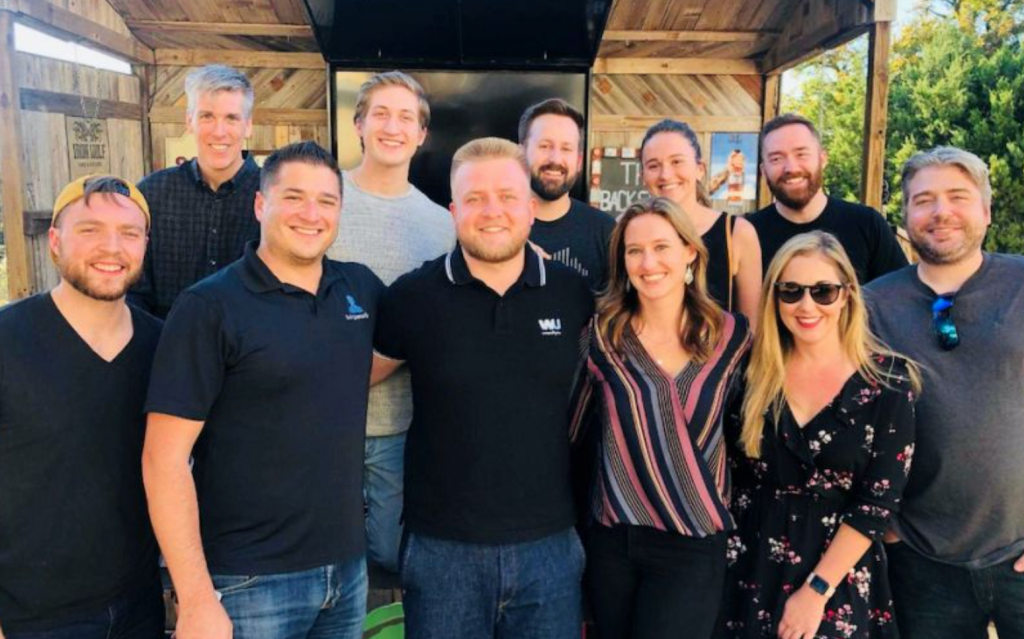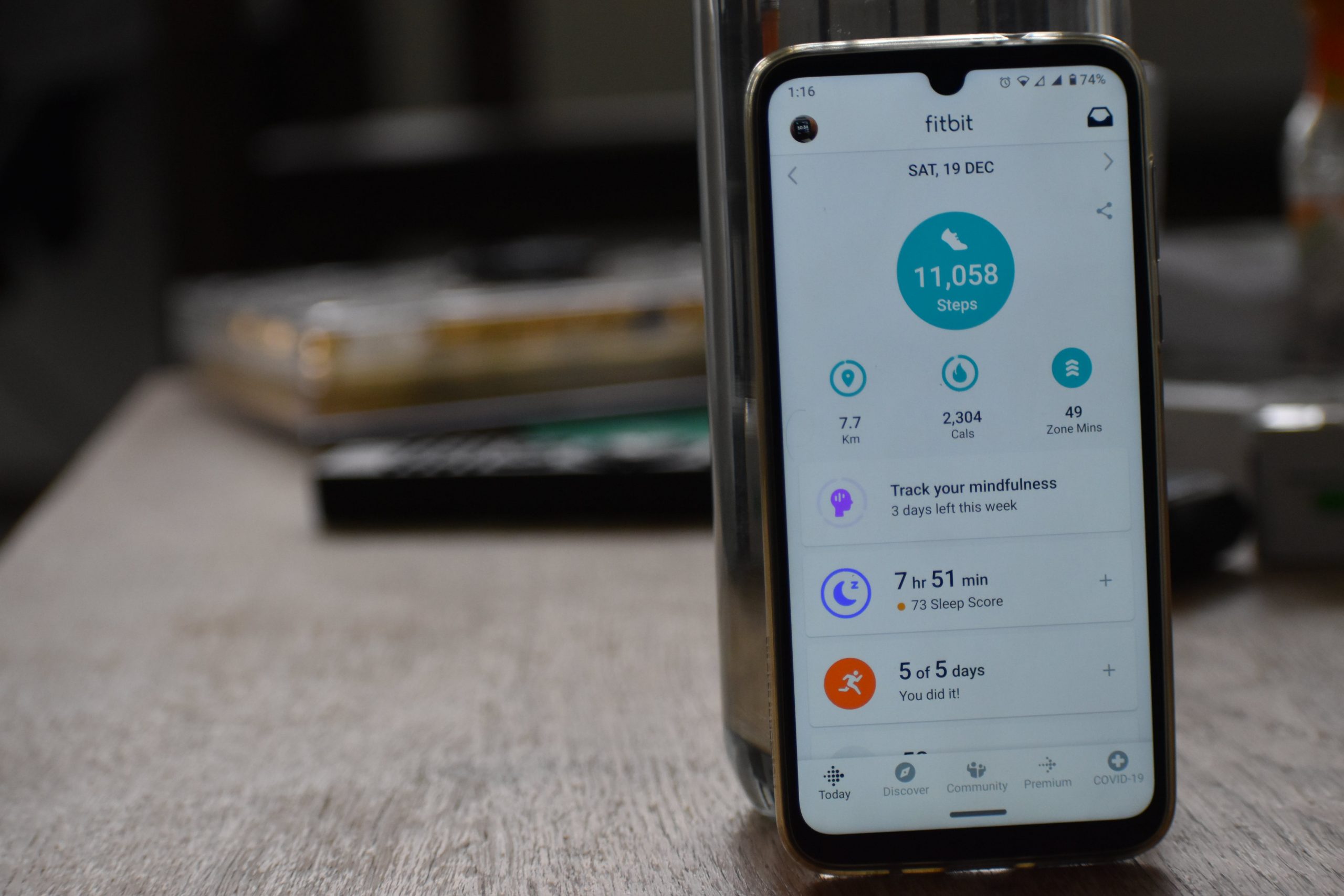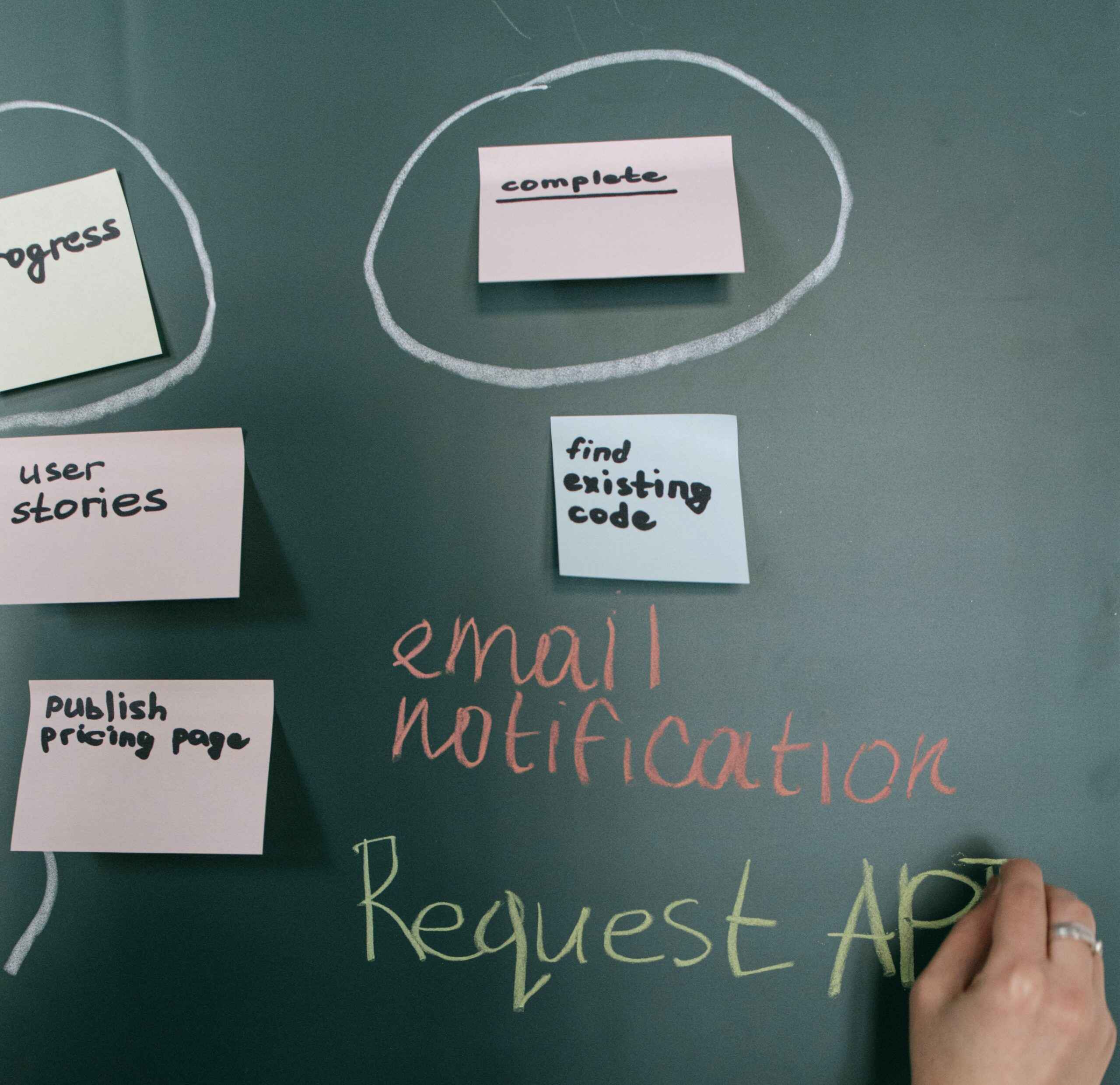Student data is among the most sensitive information any digital platform can handle. And when health data enters the picture, the stakes rise even higher. Yet, as EdTech platforms continue to expand their reach and functionality, many founders and tech leaders find themselves navigating a complex legal landscape defined by FERPA and HIPAA. A single misstep in compliance can lead not only to legal consequences but also to a loss of institutional trust that’s difficult to recover.
The urgency is growing. 96% of K-12 apps share student data with third parties, amplifying concerns around data privacy and regulatory oversight at all education levels. This places the burden of FERPA compliance squarely on product teams and development partners. Besides, most EdTech companies struggle to comply with these regulations, largely due to vague or inconsistent cybersecurity guidelines. It’s no longer enough to secure data; you have to demonstrate, document, and design for compliance from the ground up.
At WeSoftYou, we’ve helped build secure, regulation-aligned platforms for both K-12 and higher education, balancing functionality with strict privacy requirements. In this article, we’ll walk you through what HIPAA and FERPA in schools demand from an EdTech platform, where most companies go wrong, and how to embed compliance into your architecture, processes, and documentation from day one.
Understanding the Privacy Rights of HIPAA and FERPA in Schools
When building or scaling an EdTech platform, understanding the core differences between HIPAA (Health Insurance Portability and Accountability Act) and FERPA (Family Educational Rights and Privacy Act) is essential.
While FERPA governs the privacy of student education records, HIPAA applies to health information shared through covered entities. In some cases, both regulations may intersect, particularly in platforms that manage student wellness data, counseling records, or school-based healthcare services. For EdTech leaders, knowing which law applies (and when) is critical to making the right architectural, legal, and operational decisions from day one.
HIPAA: Protecting Health Information in Education Settings
HIPAA for students governs the protection of Protected Health Information (PHI), which is any health-related data that can identify an individual. In educational settings, this becomes especially relevant when EdTech platforms support services like school-based health clinics, mental health counseling, or special education programs that handle sensitive medical information.
For EdTech platforms, non-compliance can result in severe penalties, including fines up to $1.5 million per violation per year. Meanwhile, most infringements involve educational institutions traced back to third-party vendors. This highlights a growing vulnerability as more schools rely on digital solutions to deliver or manage health-related services. It’s not just about checking legal boxes; it’s about protecting students’ privacy, upholding institutional credibility, and avoiding high-risk exposure.
FERPA: Safeguarding Student Educational Records
The Family Educational Rights and Privacy Act (FERPA) protects the privacy of student education records and grants parents – plus eligible students – control over their academic information. Any EdTech platform that collects, stores, or processes personally identifiable information (PII), grades, attendance, or other academic records must adhere to FERPA regulations.
Violating FERPA can have serious consequences, including the loss of federal funding, institutional investigations, and long-term reputational damage. As data analytics becomes more central to digital education, platforms must ensure that advanced tools and insights do not inadvertently compromise student privacy.
HIPAA vs. FERPA Compliance in EdTech Platforms
To navigate compliance effectively, EdTech leaders need a clear understanding of how HIPAA and FERPA differ in scope, requirements, and risk. The table below breaks down the key distinctions that matter most when building or scaling an education platform.
| Aspect | HIPAA | FERPA |
| Primary Focus | Protects health information (PHI) shared by covered entities | Protects educational records and personally identifiable student info |
| Regulatory Body | U.S. Department of Health and Human Services (HHS) | U.S. Department of Education (ED) |
| Applies When | Platform stores or transmits PHI from healthcare providers in schools | The platform collects, stores, or processes student academic records or PII |
| Typical Data Covered | Medical history, diagnoses, counseling records, immunization data | Grades, transcripts, disciplinary records, attendance, student ID info |
| Who Has Rights to Data | The individual (student) or their legal guardian | Parents (K–12) and eligible students (18+ or postsecondary) |
| Consent Requirements | Written authorization required for most disclosures | Parental or student consent generally required before data sharing |
| Third-Party Vendor Involvement | Requires Business Associate Agreements (BAAs) with all PHI-handling vendors | Must ensure vendors act under “school official” criteria with proper controls |
| Breach Penalties | Fines up to $1.5M per violation/year; enforcement includes audits | Loss of federal funding; possible investigations and required remediation |
| Most Common EdTech Risk | Integrating health services (e.g., mental health, telehealth, special ed) | Handling academic records across multiple tools without proper controls |
| Training & Documentation | Ongoing staff training required; documented safeguards essential | Policies must be documented; staff must understand data handling limits |
| Analytics Considerations | Must not compromise PHI or lead to re-identification | Must anonymize or aggregate to avoid revealing individual student data |
| Real-World Example | School-based health app storing counseling records from licensed providers | LMS or SIS managing grades, schedules, and parental communication |
Why Dual Compliance Matters in EdTech
As EdTech platforms evolve to support not just academic progress but also student well-being, they often operate at the intersection of education and health. This convergence means many platforms must comply with both FERPA and HIPAA, a dual responsibility that complicates how data is collected, stored, shared, and protected. The challenge lies in enabling meaningful insights and personalization without compromising privacy or crossing regulatory boundaries.
As an experienced education development company, we’ve seen that addressing compliance proactively (from the earliest stages of product design) is the most effective way to avoid costly rework and regulatory gaps. Building with dual compliance in mind allows your EdTech team to implement scalable access controls, define clear roles around data handling, and adopt security practices that hold up under scrutiny.
Beyond technical safeguards, we advocate for embedding compliance into company culture. That means including HIPAA and FERPA guidelines in onboarding, offering regular staff training, and using tools that simplify documentation and audits.
Key Steps to Achieve HIPAA & FERPA Compliance in Your EdTech Platform
Most compliance failures in EdTech don’t happen because teams ignore the rules, but because HIPAA and FERPA are treated as legal obligations rather than architectural requirements. True compliance starts at the system level: how data flows through your platform, who touches it, and what assumptions your product makes about visibility and consent. If these foundations aren’t intentional, it won’t matter how strong your privacy policy sounds.
The following steps are about engineering your platform to sustain trust at scale, simplify auditability, and make privacy a default rather than a defense.
1. Conduct a Thorough Risk Assessment
Before architecture decisions are made or code is written, teams must assess how their platform interacts with sensitive student data – both educational and health-related. A meaningful risk assessment goes far beyond checking compliance boxes; it maps your actual data flows, highlights potential points of exposure, and reveals blind spots in processes and permissions.
We advocate for a cross-functional approach, bringing together product managers, developers, security leads, and legal advisors to uncover risks across third-party APIs, cloud infrastructure, data analytics pipelines, and user permissions. Using red-team simulations or penetration testing early in the lifecycle helps surface vulnerabilities long before production. Done right, this step becomes the backbone of your compliance strategy.
2. Implement Robust Data Encryption and Access Controls
Encryption should be an integral part of how your system processes and moves data.
Here’s our approach to this:
- Encrypt data at rest and in transit. Ensure that all sensitive data, including PHI and PII, is encrypted during storage and transmission using industry-standard protocols (e.g., AES-256, TLS 1.3).
- Go beyond SSL toggles. Implement compliance-grade encryption by managing encryption keys securely, protecting backup environments, and ensuring logging systems are not a vulnerability.
- Apply role-based access control (RBAC). Enforce the principle of least privilege by restricting user access based on job roles and limiting exposure to sensitive data only when necessary.
- Use multi-factor authentication (MFA). Require MFA for all system users with access to educational or health data to reduce the risk of unauthorized access from compromised credentials.
- Conduct regular access log audits. Schedule and document audits of who accessed what, when, and why, ensuring transparency and readiness for internal or external compliance reviews.
- Enable anomaly detection for access behavior. Use automated tools to detect unusual login patterns, permission changes, or data access anomalies that could indicate internal misuse or breach attempts.
3. Develop Clear Data Handling and Retention Policies
Compliance doesn’t stop at secure storage; it extends to how long data is kept, how it’s used, and when it’s purged. FERPA and HIPAA both require clearly defined data retention policies and user-level transparency about what’s being collected and why.
From our work with EdTech platforms, we recommend automating the data lifecycle wherever possible:
- Use retention rules to trigger archiving or deletion after specific events (e.g., graduation, account closure)
- Make your actions visible in admin dashboards for accountability.
- Run privacy policy workshops and onboarding sessions for your internal teams, so that legal language turns into lived behavior.
4. Ensure Secure Cloud Infrastructure and Vendor Management
Cloud-native infrastructure brings scalability, but also complexity. Many teams assume cloud platforms are compliant out of the box, but that’s rarely true. You’ll need to verify that providers offer FERPA- or HIPAA-aligned service agreements, including Business Associate Agreements (BAAs) where applicable.
To ensure this, we implement a vendor compliance lifecycle: vetting vendors during onboarding, integrating SLA-level monitoring, and conducting periodic risk reviews. Third-party risk isn’t just a technical threat; it’s a reputational one. A breach in a vendor’s system can still be your liability. Knowing exactly how your vendors handle, store, and access student data is key to operational security and institutional trust.
5. Incorporate Continuous Monitoring and Incident Response Plans
No platform is ever 100% breach-proof. What matters is how fast you detect, respond, and recover. Continuous monitoring tools (SIEM, EDR, or behavior analytics platforms) should be wired into your infrastructure to flag unusual activity in real time. But tooling alone won’t save you – your team’s readiness will.
That’s why we advise building a living incident response plan: a tested, documented playbook that outlines roles, escalation paths, legal notification steps, and post-incident reviews. This plan should be practiced like a fire drill not just read once and archived. Integrate compliance response training into onboarding for your technical and operational teams. The more prepared your people are, the less reactive your organization will be when, not if, a threat emerges.
Technical Best Practices for Secure EdTech Development
Security in EdTech means building systems that can be trusted to handle deeply personal information.. When your platform touches both HIPAA and FERPA domains, your responsibility multiplies. Privacy becomes a product feature, while compliance is an architectural constraint. At the same time, security decisions should scale as your platform grows.
We approach this not with off-the-shelf playbooks, but with embedded, end-to-end thinking. From infrastructure to UI logic, every layer is evaluated for its potential exposure, regulatory implications, and long-term maintainability. Below are the real-world technical practices we use to help our EdTech partners design platforms that can stand up to scrutiny today, and in the future.
Zero Trust Security Architecture
In a Zero Trust model, we assume no user or system component is inherently trustworthy, even within your infrastructure. This helps reduce the blast radius of any breach.
- Authenticate beyond login. Every request, whether from a user or a service, must verify its identity.
- Secure service-to-service communication. Internal APIs and microservices communicate via mutual TLS, ensuring integrity and authenticity.
- Isolate environments by default. We minimize lateral movement inside networks by enforcing strict access policies between services, even if they run in the same cloud VPC or subnet.
Defense-in-Depth Application Design
Security should be treated as a series of checkpoints across the stack that catch failures early and often.
- Multi-tiered security. We layer protections across the UI, API, business logic, and database tiers to prevent attackers from reaching critical systems in one step.
- Secure-by-default coding. Our devs follow strict input validation, output encoding, and schema enforcement to guard against XSS, CSRF, and SQLi.
- Frontend protection. We implement CSP headers, HTTP-only cookies, and rate limiting to reduce exposure to bots, scraping, and injection attempts.
Infrastructure Hardening and Observability
A secure backend is as critical as a secure frontend, especially when your platform handles PHI or education records.
- Automated vulnerability patching. OS and container-level updates are baked into our CI/CD pipelines.
- Minimal attack surfaces. We use hardened base images and distroless containers to reduce unnecessary components.
- Anomaly-driven observability. Monitoring tools flag suspicious patterns like spikes in failed logins or uncharacteristic data queries, before they become incidents.
Secure DevOps and Secrets Management
Modern deployments require velocity without compromising control. That balance depends on secure DevOps practices.
- No secrets in code. Ever. We use AWS Secrets Manager, Azure Key Vault, or HashiCorp Vault for managing sensitive credentials.
- Ephemeral credentials only. CI/CD pipelines use short-lived access tokens instead of hardcoded keys.
- Every merge is reviewed and scanned. We enforce mandatory code reviews and run static security checks (SAST) on all pull requests.
Privacy-by-Design Data Architecture
Security is about being intentional with the data you collect and how you manage it.
- Minimal data by default. We collect only what’s essential to deliver the core experience and avoid overreaching by design.
- Safe test environments. All staging and testing environments use masked or tokenized datasets to protect live identities.
- Immutable audit trails. Every access to student or health records is logged in tamper-proof systems essential for FERPA and HIPAA audit readiness.
Regular Threat Modeling and Compliance Validation
Ensure that compliance is a process that evolves with your product.
- Quarterly threat modeling. We review the system architecture every quarter (or after adding new tools) to identify new risks.
- Live documentation. Our compliance mappings (e.g., HIPAA Security Rule, SOC 2) and infrastructure diagrams are always up to date, not buried in a folder.
- Readiness drills. We simulate real-world breach scenarios to train response teams and improve time-to-detection and resolution.
Organizational and Legal Considerations
Building a HIPAA- and FERPA-compliant platform is a technical and cultural exercise. That’s because policies are important, but how your team operates day to day determines whether compliance holds up in the real world.
Training That Doesn’t Get Ignored
Security awareness should feel like part of your product culture, not an annual checkbox. Developers, ops teams, and even your customer support reps need to know what compliance looks like in their role. That’s why we recommend:
- Tailoring training content to platform-specific workflows (not generic slide decks).
- Using real breach examples and platform use cases to explain why this matters.
- Running short, recurring refreshers instead of long, forgettable sessions once a year.
When people understand why security policies exist and see how they connect to the product they’re building, they buy in. It’s that simple.
Legal Documents with a Backbone
Your Terms of Service, Privacy Policy, and Data Use Agreements should do more than just sit at the footer of your website. They’re your frontline defense and a reflection of how seriously your team takes data ethics. That means:
- Working with legal partners who specialize in education and healthcare law (the overlap matters).
- Defining how you handle data requests, breach disclosures, and institutional responsibilities.
- Updating policies as your platform evolves, not just when a new law rolls in.
Clear documentation builds trust faster than vague promises ever will.
Institutional Trust Starts with Collaboration
Whether you’re working with a school district or a health provider, your compliance story needs to feel collaborative. We at WeSoftYou often lead joint workshops with clients’ internal teams (legal, IT, admin) to map out expectations, responsibilities, and data flows early. This approach has helped:
- Speed up procurement cycles by demonstrating readiness.
- Prevent misalignment between product features and district policy.
- Build long-term relationships grounded in transparency and shared accountability.
In other words, showing your work makes a difference. And if you can speak the language of both IT and institutional leadership, you’re already ahead.
Why We’re Your Perfect Partner When it Comes to Secure EdTech Development
When it comes to building platforms that must meet both HIPAA and FERPA standards, choose a partner with proven technical rigor, domain expertise, and operational trust, but also a human touch. Here’s what sets WeSoftYou apart:
- Dual Compliance Expertise: We’ve built platforms that manage both PHI and student data, helping clients meet HIPAA and FERPA standards without slowing innovation.
- Security-First Engineering: From zero trust architecture to encryption key control, security is baked into our architecture, not added after the fact.
- Real EdTech Results: We’ve unified 20,000+ student profiles in a K–12 platform, cut onboarding time by 90%, and streamlined data access for educators and admins.
- A Partner, Not Just a Vendor: We run stakeholder workshops, align legal and technical teams, and adapt solutions to each institution’s policies.
If you’re building something that sits at the crossroads of education and health, we’d love to help you get it right.
Our Proof in Action: How We Rebuilt a Secure, Scalable EdTech Platform from Scratch
When a Texas-based EdTech nonprofit came to us, they were grappling with a student support platform that had outlived its usefulness. Built on Salesforce, the system was expensive, rigid, and slow to scale; onboarding new districts took weeks, and everyday workflows had become clunky and inefficient. But the real cost was in delayed support for students who needed timely academic or behavioral interventions.
Instead of trying to fix what was broken, the organization chose to start over. Together, we rebuilt the platform from the ground up, focusing on speed, scalability, data privacy, and intuitive design, so that educators and service providers could respond faster and make a bigger impact where it mattered most.
What We Delivered
WeSoftYou designed and launched a custom K–12 data management platform tailored to the nonprofit’s vision. Built on Django and React, the new platform integrated with multiple Student Information Systems (SIS), automated student support workflows, and gave educators real-time insights for early intervention. All while aligning with HIPAA and FERPA regulations.
Key outcomes:
- 90% faster onboarding of new school districts through automated workflows
- 80% reduction in administrative overhead thanks to form routing and role-based permissions
- 20,000+ student profiles unified in one secure system
- Significant cost savings after leaving the Salesforce licensing model behind
Why It Worked
Instead of trying to cover every edge case with configurations, we focused on designing a modular, secure-by-design platform:
- Role-based access control ensures student data is only seen by those who need it.
- Cloud-native infrastructure enables rapid onboarding and scalability.
- Real-time dashboards and automated alerts surface high-risk cases instantly.
- Every integration, from SIS to service provider portals, is vetted for compliance.
Now, the nonprofit manages multiple school districts from a single interface, while its support teams are free to focus on student outcomes instead of fighting with tools.
Conclusion
Building secure, scalable, and compliant EdTech platforms is the foundation for trust, impact, and long-term growth. Whether you’re supporting K–12 students or integrating wellness tools into learning environments, the way you handle sensitive data defines how your platform is perceived and how it performs under regulatory scrutiny. Navigating FERPA and HIPAA in schools and other educational institutions may seem daunting, but when security and compliance are embedded into your architecture and team culture from day one, they stop being obstacles and start becoming strategic assets.
The key is not to treat compliance as a box to check, but as a continuous process, one that involves technical foresight, thoughtful design, clear documentation, and strong cross-functional collaboration.
Our team helped EdTech organizations like yours rethink the way data is managed, shared, and protected, without compromising usability or speed.
If you’re planning to build or modernize an EdTech solution, let’s talk about how to make compliance your competitive edge.
Frequently Asked Questions (FAQ)
Does every EdTech platform need to comply with both HIPAA and FERPA?
Not necessarily. Compliance depends on the type of data your platform handles. If your platform manages student educational records, FERPA applies. If it handles health information, HIPAA may apply. Many platforms that integrate health and education services must comply with both. It’s important to understand the nuances of each regulation; for instance, FERPA protects the privacy of student education records, while HIPAA safeguards medical information. Therefore, platforms that offer telehealth services for students must navigate both sets of regulations carefully to ensure comprehensive compliance.
How can I ensure my third-party vendors comply with HIPAA and FERPA?
Always request and review Business Associate Agreements (BAAs) for HIPAA and FERPA-compliant service agreements. Conduct due diligence on their security certifications and compliance history. WeSoftYou helps clients vet vendors and integrate compliant services seamlessly. Additionally, it’s wise to establish a regular communication channel with these vendors to stay updated on any changes in their compliance status or security practices. This proactive approach not only strengthens your compliance posture but also fosters a collaborative relationship that can be beneficial in addressing any potential issues that may arise.
What are the biggest compliance risks in EdTech development?
Common risks include inadequate data encryption, poor access controls, lack of audit trails, insufficient employee training, and unclear data retention policies. Addressing these proactively reduces the likelihood of breaches and penalties. Moreover, the rapid pace of technological advancements in the EdTech sector often leads to new vulnerabilities. For instance, the integration of artificial intelligence and machine learning can introduce complexities in data handling that may not have been anticipated during initial compliance assessments. Therefore, staying informed about emerging threats and continuously updating security measures is crucial for maintaining compliance.
How often should compliance audits be conducted?
Regular audits, at least annually are recommended, with additional reviews after significant platform updates or incidents. Continuous monitoring tools can provide real-time compliance insights between audits. Furthermore, involving a diverse team in the audit process can enhance its effectiveness; including IT, legal, and educational stakeholders ensures a comprehensive evaluation of compliance across all aspects of the platform. This multidisciplinary approach can also help identify potential blind spots that may have been overlooked, ultimately leading to a more robust compliance framework.




















